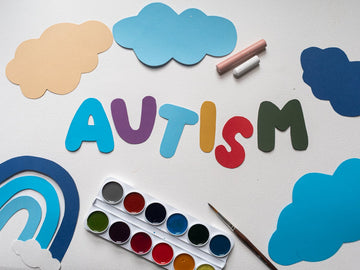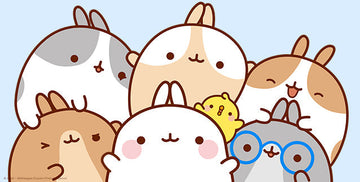Watching a child grow brings immense joy as they achieve new skills and express their curiosity. Each milestone, from their first words to playful interactions, is a cause for celebration. In today's world, where information is prevalent, parents may start to question whether their child's behavior is developmentally appropriate or if there are signs of autism.
This article will guide parents in recognizing the positive indicators of typical development in toddlers. By understanding these signs, they can gain clarity and confidence about their child's growth, fostering a more reassuring environment for both parent and child.
Grasping Autism and Normal Development
It is important to understand autism and the patterns of normal child development. Autism Spectrum Disorder (ASD) is a complex condition that influences how individuals communicate and interact with others. In contrast, normal development generally follows a specific trajectory, although each child has their own unique pace in reaching key milestones.
Normal development can be viewed as a winding river, with various bends representing new skills. Autism may be seen as a river taking unexpected routes or flowing differently. Both paths represent distinct experiences, showcasing the diverse journeys of growth each child undergoes.

The Significance of Initial Monitoring
Observing a toddler’s growth closely is essential for their development. Early monitoring helps caregivers support their progression and quickly address any issues. It is not about making comparisons with other children, but rather recognizing and appreciating each child’s individual growth journey.
By noting behaviors and milestones, caregivers can gather important insights. This awareness enables them to celebrate successes and seek assistance when necessary. It serves as a guiding map of the child’s development, where each milestone acts as a key point on their unique path.
Typical Toddler Development
Physical Growth
Picture a toddler as a small adventurer, discovering their physical abilities with excitement. This stage begins with unsteady steps before they gain the confidence to run freely. Alongside gross motor skills, fine motor skills are also developing. It’s remarkable to see how they move from simple object grasping to creating their first drawings.
Age |
Gross Motor Skills |
Fine Motor Skills |
12-18 months |
Walks independently, climbs |
Stacks 2-3 blocks, starts scribbling |
18-24 months |
Runs, kicks a ball |
Turns book pages, uses a spoon |
24-36 months |
Jumps, pedals a tricycle |
Draws basic shapes, handles a fork |
Intellectual Development
The toddler's mind is constantly absorbing new information. Language skills progress from cute babbling to single words and eventually to full sentences by age three. Monitoring this linguistic journey is rewarding.
During this period, problem-solving abilities start to take shape. Toddlers learn to stack blocks and solve simple puzzles, driven by a natural curiosity. This eagerness to ask questions and explore their surroundings is a significant aspect of their cognitive growth.
Emotional and Social Growth
In toddlerhood, a child’s distinct personality begins to emerge. This phase is marked by the expression of independence, often met with a firm “No!” They experience a spectrum of emotions and start to understand how to interact socially. Although tantrums may occur as they learn to regulate their feelings, moments of joy and affection are equally important.
As toddlers engage in play, they begin to develop social skills, such as playing next to other children, sharing toys, and showing signs of empathy. These early interactions set the foundation for meaningful relationships in the future.
Dress your child in charm year-round with our Seasonal Kids Clothing Sets — thoughtfully curated for every season’s adventures, from cozy winters to sunny springs.
10 Joyful Signs Your Toddler May Not Be Autistic
1. Eye Contact in Interaction
When a toddler maintains eye contact during a game like peek-a-boo or while sharing a story, it signals an important milestone in their development. This connection demonstrates that they are engaged and communicating non-verbally with those around them. Children who are developing typically often initiate eye contact to share their excitement or seek comfort, showing their ability to connect socially.

2. Smiling in Response
A toddler’s smile holds special meaning when it is a reaction to the emotions or actions of others. This ability to respond with a smile indicates that they are in tune with feelings and capable of reciprocal emotional exchanges. For instance, a toddler might beam with joy when a parent smiles or express happiness when someone enters the room. This kind of responsive smiling points to social awareness and emotional engagement.
3. Exploring Sounds and Words
The pathway from babbling to speech is filled with excitement. A toddler typically starts with babbling, mimicking adult speech patterns. This early form of communication is crucial for language development. As they grow, children usually begin using words, starting with simple ones like "mama" and "dada." By around two years of age, many children can string together two words, transitioning to short sentences by age three. This progression in speech indicates healthy development.
Let your little ones shine in our Summer Clothes for Kids collection, featuring playful prints and lightweight comfort for every beach day, playdate, and popsicle moment.
4. Using Gestures and Pointing
When a toddler points to an interesting object, like a colorful bird, or gestures to invite you over to see their artwork, they are demonstrating a key communicative skill. This act of pointing indicates an understanding of shared attention, meaning they want to connect their experience with someone else. It showcases their social awareness and ability to communicate needs or interests.

5. Engaging in Creative Play
A toddler turning a box into a spaceship or hosting a tea party with stuffed animals is participating in imaginative play, which reveals both cognitive and social growth. This type of play allows children to experiment with different roles and scenarios. Typically developing toddlers naturally engage in pretend play, where they use objects symbolically, an activity that may be less frequent in children on the autism spectrum.
6. Imitating Social Behaviors
When a toddler imitates actions like sweeping the floor or mirrors facial expressions, it shows they are engaged in social learning. This imitation highlights that they pay attention and are trying to understand others’ actions and intentions. This skill is vital for their learning process and helps them connect socially with others.
7. Responding Emotionally
A usually developing toddler showcases a variety of emotions and reacts to the feelings of those around them. For instance, a child might offer a hug when a parent is sad or jump with joy during exciting moments. This ability to read emotional cues and respond appropriately indicates the development of empathy and emotional intelligence, both critical for healthy social interactions.
8. Flexibility with Changes
While young children often thrive on routines, those developing typically show some flexibility when faced with change. For example, a toddler may be upset about a dirty cup but can often adapt to using a different one with reassurance. This ability to adjust reflects cognitive flexibility and emotional regulation, skills that can be more challenging for children on the autism spectrum.
9. Curiosity About Other Children
As toddlers grow, they often begin to show interest in their peers. They may observe other children playing, attempt to join in, or reach out to make new friends in their own unique way. This curiosity about others is an important indicator of social development. Even if they don’t play cooperatively right away, expressing interest in other children sets the foundation for future social relationships.
10. Shared Attention
Joint attention involves a focus that includes the child, an adult, and an object or event. When a toddler brings a toy to show someone or follows an adult’s gaze when something interesting is pointed out, they demonstrate this essential skill. It highlights their ability to share experiences while switching focus between people and objects, which is crucial in understanding social interactions and is often one of the first signs differentiating typically developing children from those who might be on the autism spectrum.
Make every school day a stylish one with our Back to School collection — smart, comfy outfits designed to help kids feel confident from homeroom to recess.
Ruling Out Autism
Social Engagement and Interactive Communication
Children facing challenges related to autism may struggle with social communication and engagement. They might not react when their name is called, often avoid making eye contact, and show limited interest in social activities such as peek-a-boo. In contrast, children who are developing typically typically participate actively in these social interactions.
Focused Interests and Repetitive Behaviors
While all children have specific likes and routines, those with autism may exhibit highly focused interests or repetitive actions that disrupt their daily lives. Typically developing toddlers may show favorites in toys or games but generally display diverse interests and can often be redirected without issue.

Additional Considerations
Diagnosing autism requires careful observation of various behaviors over time. Other signs may include delayed speech skills, atypical sensory reactions, or challenges with changes in their routines. It’s important to note that many of these behaviors can appear in children developing typically. What sets them apart is the degree, frequency, and effect they have on everyday life.
Area |
Possible Warning Signs |
Social Engagement |
– Unresponsive to name by 12 months – Avoidance of eye contact – Preference for solitary play – Lack of interest in sharing activities with others |
Communication |
– Delays in speech and language skills – Repetition of phrases (echolalia) – Absence of gestures (e.g., waving) – Unusual tone or rhythm in speech |
Behavioral Patterns |
– Engaging in repetitive actions like rocking or hand-flapping – Developing strict routines with distress over minor changes – Strong focus on specific interests – High sensitivity to sensory experiences |
Behaviors That Don’t Necessarily Point to Autism
Doesn’t Respond to Your Call
Many toddlers appear to have selective hearing. When they do not respond to being called, it doesn't automatically suggest autism. Often, they are simply engrossed in their play or exploring boundaries. Trying to make eye contact and getting down to their level may improve responsiveness.
Develops Traits After Early Childhood
Traits associated with autism usually emerge in early childhood. If a child begins to show these behaviors later on, it is likely due to other influences. It's essential to consult a healthcare professional for a thorough evaluation in such cases.
Fixates on Specific Interests or Hobbies
Children often display intense interests in certain subjects or activities, which is a normal phase of development. This fixation does not necessarily mean they are on the autism spectrum. Parents should support these interests while also gently introducing new activities to encourage a broader range of exploration.
Talks Later Than Most Kids
Delayed speech can sometimes indicate autism, but many children who talk later are simply late bloomers. If speech delays are a concern, consulting a pediatrician or a speech therapist can provide guidance and reassurance.
Explore more and spend less with our Budget-Friendly Collection , where adorable kids' outfits meet unbeatable value for everyday fun and growing wardrobes.
Prefers Being Alone
A preference for solitude is common among toddlers and does not always mean a child is autistic. Many typically developing children enjoy playing alone. As long as they can socialize when needed, valuing time alone is generally seen as normal behavior.

Lines Things Up
It is typical for toddlers to enjoy organizing toys or arranging objects in a line. This behavior can be part of normal cognitive and play development. Concerns arise only when the behavior becomes rigid and interferes with other activities.
Recognizing Common Toddler Behaviors
Identifying normal behaviors in toddlers helps caregivers manage this exciting and demanding stage of growth. It aids in setting realistic goals, giving proper guidance, and spotting any issues early.
Common behaviors observed in toddlers include:
Curiosity and exploration
Short attention spans
Frequent mood changes and tantrums
Desire for independence
Imitating adults and friends
Pushing limits
Each child is different, and variations in behavior are completely normal.
When to Seek Professional Advice
Recognizing typical development is important, but parents should follow their instincts if doubts arise. Consider reaching out to a healthcare professional in these situations:
Multiple developmental milestones are not being met.
There is a regression in skills that were previously learned.
There is a lack of interest in social interactions.
Verbal communication is minimal or absent by age 2.
A persistent feeling that something is amiss.
Taking action early can lead to better outcomes, so seeking advice is encouraged when concerns exist.
Encouraging Growth in Toddlers
Supporting a toddler’s growth is a fulfilling part of being a parent. Effective methods to aid this development include:
Engaging in frequent face-to-face interactions
Reading together each day
Fostering imaginative playtime
Allowing chances for socialization with other children
Reducing screen time to enhance real-world experiences
Providing choices to strengthen independence
Keeping established routines for security
Celebrating every milestone, no matter how minor
Love and attention are vital for healthy growth.
The Importance of Parental Insight
Parents have a special understanding of their child's actions and growth. It is essential for them to trust their instincts while being receptive to advice from professionals. Balancing intuition with factual observations enhances awareness.
Keeping a journal can be beneficial. Parents should document specific behaviors, noting when they occur and their frequency. This detailed information becomes a useful tool when discussing the child's development with medical experts.
Assessing Early Signs of Autism in Toddlers
There are tools designed to help identify early signs of autism in young children. These screening tools are particularly useful when there are worries about a child's growth and behavior. Common screening options include:
M-CHAT (Modified Checklist for Autism in Toddlers)
STAT (Screening Tool for Autism in Toddlers & Young Children)
CSBS DP (Communication and Symbolic Behavior Scales Developmental Profile)
It's important to note that these tools are meant for screening, not for making a diagnosis. A positive result does not confirm autism, just as a negative one does not exclude it. Consulting a healthcare professional is crucial for a thorough evaluation if concerns arise.
Closing Thoughts
Parenting a toddler is a journey filled with excitement and challenges. Each day brings new opportunities to witness remarkable growth and development. Signs of typical milestones, such as engaging eye contact and creative play, highlight the beauty of this stage in life.
It is crucial to recognize that each child unfolds at their own pace. While some may reach developmental milestones earlier than others, this variance is entirely normal. Parents should take pride in the unique journey of their child.
For those who have any concerns regarding their toddler's growth, seeking help from a professional can be beneficial. Early intervention can lead to positive outcomes and support a child’s development. Yet, amidst these worries, it's equally important to cherish the joyous moments of childhood.
Parents play an essential role as encouragers and supporters. Embracing each milestone and providing a loving environment fosters the child's ability to thrive. Remember, celebrating these moments is a vital part of the parenting experience.
FAQ – Signs Your Toddler Is Not Autistic
What are early indications that a toddler may not be autistic?
Some of the first signs of typical development in toddlers include responding with smiles, maintaining eye contact, and making early attempts at speech. Children who are developing normally usually show interest in socializing, respond promptly when their name is called, and participate in simple exchanges of communication. It's essential to keep in mind that not displaying these signs doesn’t automatically mean autism is present, and showing them doesn’t guarantee a lack of it. Each child grows at their own speed.
Should lining up toys be a cause for concern regarding autism?
Not really. It’s quite common for toddlers who are developing typically to enjoy arranging or lining up their toys during playtime. This behavior can reflect their developing cognitive skills, indicating an understanding of patterns and organization. Only if this behavior becomes overwhelming or rigid, substantially hindering social engagement or other play activities, should it raise concerns for autism. If doubts persist, consulting a pediatrician may provide useful insights.
When is it possible to accurately diagnose autism?
While some signs of autism can be noted in infants, a solid diagnosis is generally achievable by the age of 24 months. However, many children may not be diagnosed until they are older. Regular developmental screenings should occur at 9, 18, and 24 or 30 months, with further evaluations if there are concerns. Early signs can often be subtle, and autism may present in unique ways for each child. This makes continuous monitoring and regular check-ins with a pediatrician very important.
How can caregivers enhance a toddler’s social growth?
To foster social development in toddlers, caregivers can create engaging opportunities for social interaction and model positive social behavior. Setting up playdates with other children, participating in pretend play, and reading stories that explore emotions can be beneficial. Encouraging taking turns in games and conversations is equally important. Recognizing and responding positively to a toddler’s attempts to communicate, even if not articulated in words, is crucial. Caregivers serve as the primary social role models, so ensuring time for personal interaction is vital.
Does not showing all signs of typical development indicate autism?
Not necessarily. Children's development is diverse, and no two children follow the same path. Some may excel in certain areas while others may take longer to develop skills in different aspects. The signs mentioned provide a general view of typical development, but their absence does not automatically suggest autism. For any concerns regarding a child's progress, reaching out to a pediatrician or a child development expert is advisable. They can offer thorough evaluations and guidance on necessary next steps.





